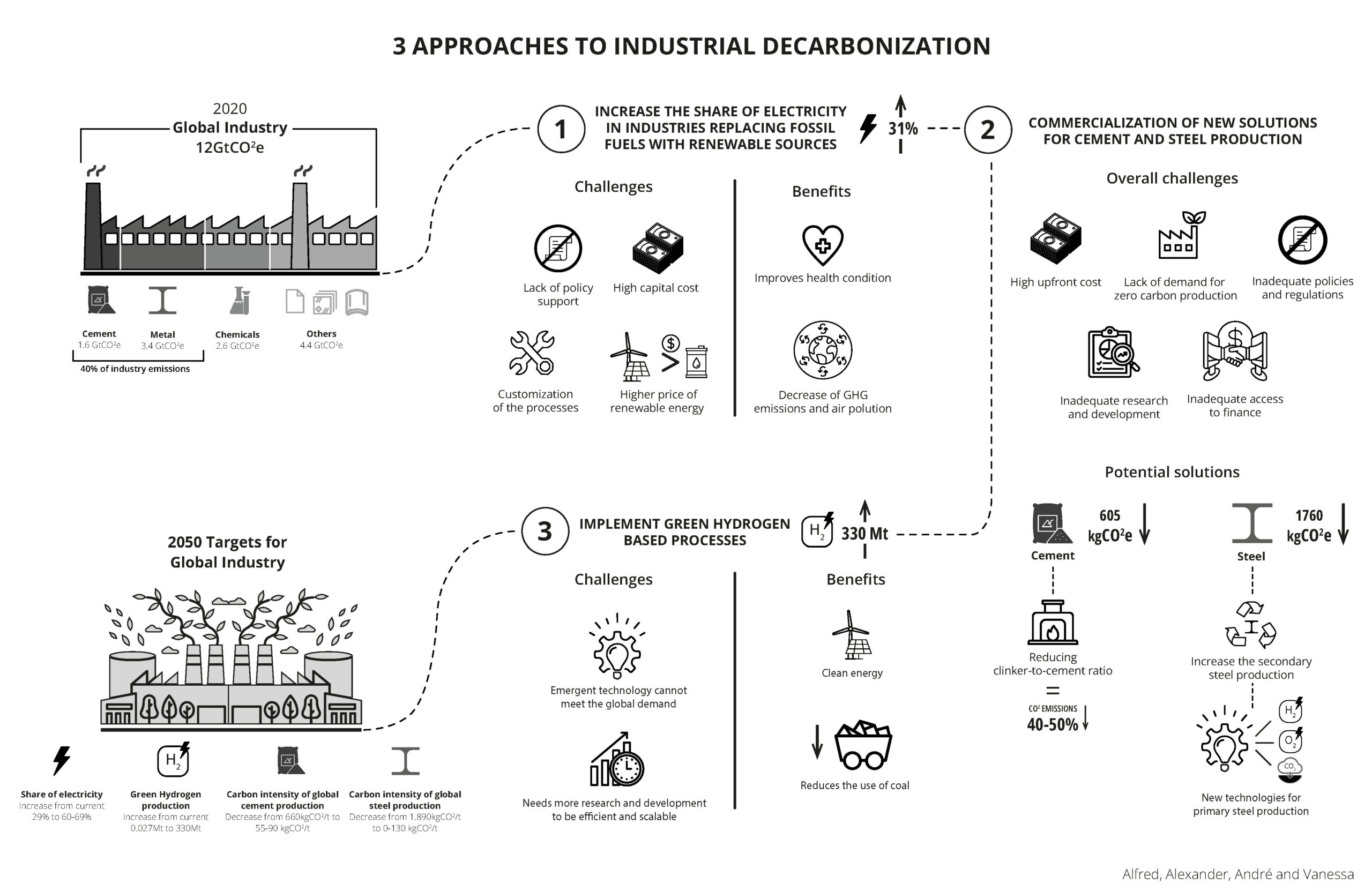The State of Climate Action study shows that Greenhouse Gas Emissions (GHG) from the Industry sector have increased faster since 2000. The study reveals that Global Industry emits 12 Gigatons of carbon emissions, and 40% of Industry emissions are caused by the production of cement (1.6 GtCO2e) and metal (3.4 GtCO2e).
There is an urgent need to decarbonize the industrial field and it can be achieved by implementing three strategies to mitigate GHG Emissions: 1) increasing the share of electricity in industries, 2) commercializing new solutions for cement and steel production, and 3) implementing green hydrogen based processes.
Increasing the share of electricity in industries aims to replace fossil fuel with renewable sources of energy. While there are many challenges that need to be faced, there are many benefits in the application of electricity for industrial processes.
As for the alternative methods of producing steel and cement there are a few ways of going about it. For steel, one of the strategies would be to increase the secondary steel production. The other strategy would be to develop new technologies for primary steel production.
For cement, one of the most feasible strategies would be to reduce the clinker-to-cement ratio in its production, changing the chemical composition of the material.
But the implementation of these strategies is halted by the following detrimental challenges: high upfront costs, lack of demand for zero carbon production in the the industry sector on the whole, inadequate support by government mandated policies and regulations, inadequate research and inadequate access to finance.
Being a clean source of energy that can also reduce the use of coal consumption, green hydrogen could also greatly reduce the CO2 emissions. However, because the technology is rather new and underdeveloped it cannot quite meet the global demand for it as of this moment. A great increase of resources investments into development this technology is crucial for it to finally take root and help achieve the goals of years 2030 and 2050.
The diagram illustrates the 3 main approaches to greatly reducing the huge carbon footprint the industry sector is leaving today. The challenges may be great but not impossible to tackle. Improving on the points illustrated in the diagram has a great potential not only to solve the CO2 emission crisis of the Industry sector but also help increase the quality of life on Earth in general.


